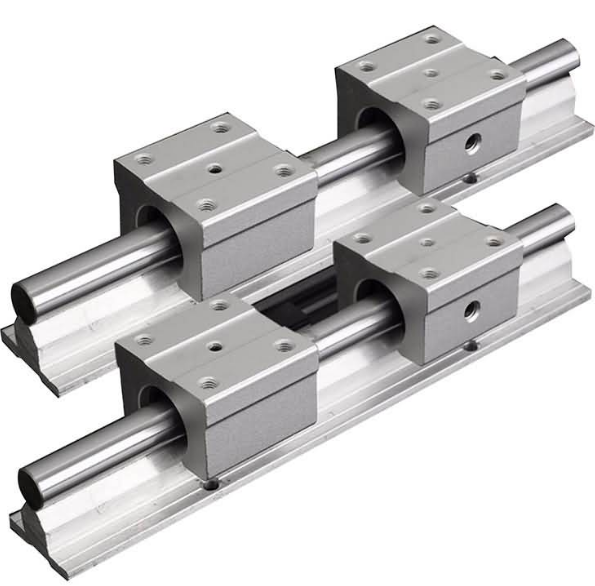Journal bearings and linear bearings are both types of bearings used to facilitate motion in various applications. While they share similarities in their purpose, there are distinct differences between the two. In this article, we will explore the dissimilarities between journal bearings and linear bearings, including their design, working principles, applications, and advantages.
Design and Construction
Journal Bearings
Journal bearings, also known as plain bearings, have a simple design consisting of a shaft or journal that rotates within a sleeve or bearing housing. The journal and sleeve surfaces are in direct contact and separated by a lubricating film. The sleeve is typically made of a low-friction material, such as bronze or babbitt, which provides a smooth surface for the journal to rotate on. The lubricating film helps reduce friction and wear between the rotating surfaces.
Linear Bearings
Linear bearings are specifically designed to facilitate linear motion along a straight path. They consist of an outer rail and an inner carriage that holds the load. The carriage is mounted on ball bearings or roller bearings, depending on the specific design. Linear bearings come in various configurations, including round rail, square rail, and profile rail, to accommodate different application requirements.
Working Principles
Journal Bearings
Journal bearings rely on the principle of hydrodynamic lubrication. When the shaft rotates, a lubricating film is formed between the journal and sleeve surfaces. This film prevents direct contact between the rotating surfaces and reduces friction and wear.shengbenzhejiangchina. The lubrication is typically provided by oil or grease, which is supplied to the bearing through an external source.
Linear Bearings
Linear bearings facilitate linear motion by providing support and reducing friction along a specific axis. The rolling elements (balls or rollers) in linear bearings move along the rail, allowing the carriage to glide smoothly. The design of linear bearings ensures that the load is evenly distributed, enabling precise and accurate linear movement.

Applications
Journal Bearings
Journal bearings find applications in various industries, including automotive, marine, and power generation. They are commonly used in internal combustion engines, turbines, pumps, and compressors. Journal bearings are suitable for applications that involve rotational motion and require high load-carrying capacity.
Linear Bearings
Linear bearings are extensively used in applications that require linear motion, such as industrial automation systems, manufacturing equipment, medical devices, and transportation systems. They provide precise and controlled linear movement, ensuring smooth operation and accurate positioning.
Advantages
Journal Bearings
- Excellent load-carrying capacity.
- Suitable for high-speed applications.
- Relatively simple design and construction.
- Cost-effective compared to some alternatives.
Linear Bearings
- Excellent precision and accuracy in linear motion.
- Low friction, resulting in smooth and efficient operation.
- Ability to handle heavy loads.
- Minimal maintenance requirements.
Conclusion
In conclusion, journal bearings and linear bearings are two distinct types of bearings used in different applications. Journal bearings rely on hydrodynamic lubrication to reduce friction between rotating surfaces and are commonly used in rotational motion applications. On the other hand, linear bearings are specifically designed for linear motion, providing precise and accurate movement along a straight path. Understanding the differences between journal bearings and linear bearings is essential for selecting the appropriate bearing type for specific applications.
